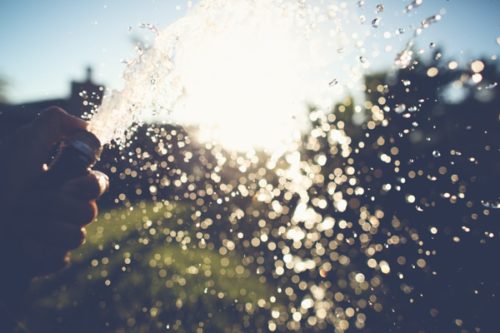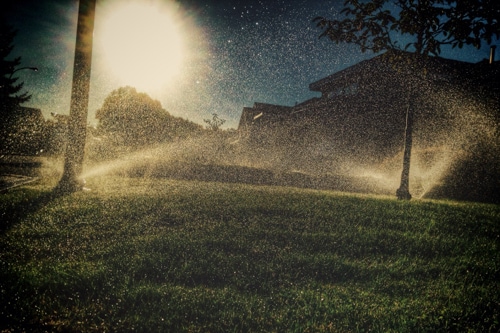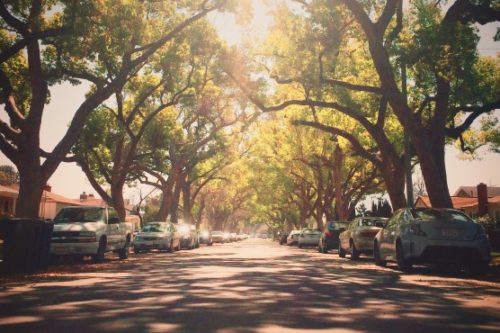

A common question that LC Tree Service is asked is, “How much should I water my trees?” A variety of components contribute to the amount of a water a tree should receive, such as the environment, climate, soil conditions, and the age of the tree, which refers to either the length of time since 1) sprouting from seed and 2) being planted in the ground.
Since they do not have an extensive root system, young trees and newly-transported trees require more attention than their older, well-established counterparts. When watering young and/or new trees, the goal is not only to hydrate the tree, but also to foster root growth. A containerized tree from a nursery has a concentrated root ball that needs to expand its range in order to survive and thrive in its new environment. The more clustered the tree’s roots are, the more limited the tree is in nutrient and water supply. The roots not only need to extend longitudinally, but they also need to dig into the ground to better access the water that has settled in deeper ground. Because all trees go through a period of shock when being transplanted, it can sometimes take up to two or more growing seasons for the roots to extend past the original planting hole. If nature doesn’t provide a good soaking rain, then the new transplant will need to be watered as often as 3 times a week during the warmer months and 1-2 times a week during the cooler seasons, in order to prevent the root ball from drying out.

On the other hand, watering established trees is a much less time-consuming task. These older trees already have an established root system that allows them to prevail during times of heat and drought. Unlike young trees and new transplants whose roots are concentrated close to the trunk, older trees’ roots typically stretch 1 – 1.5 times the width of the canopy — sometimes even stretching 3 times its width.
Most tree roots settle in the top 12 – 16 inches of soil, which is why deep watering your trees is important. If trees are given frequent, shallow or short waterings, then the roots will learn to reside in the topmost layer of soil. Roots go where the water is. If a tree is given infrequent, deep waterings, then the roots will follow the water supply as it eventually gets pulled down to the deeper ground. When you water your tree, it should be enough to sink down roughly 8 inches. This should be done about every 2 – 4 weeks, depending on the climate. The deeper the roots, the less it is affected by the sun and heat.
When watering your tree, the best method is a system that uses a slow approach. We recommend soaker hoses, as they provide a small amount of water in a lengthy amount of time, allowing the water to stay concentrated around the tree, rather then running off, as is common to see when watering trees with a hose, especially when the trees are situated on a sloping angle. Other recommended slow methods are through bubblers and drip systems.
The most common approach to watering trees, especially on commercial properties, is through the use of sprinklers. They can be great, because they are easy and cover large areas. However, on the downside, they waste large amounts of water. If you do prefer to use the sprinklers to water your trees, it is important to let it run for a sustainable amount of time, enough to moisten at least 8 inches deep into the ground. This can mean having to leave it running for 30 minutes at a time, which is why sprinklers can be wasteful when it comes to hydrating trees. Great for grass, not so great for trees.
Aside from the delivery of the water, the time of day is also a huge consideration in determining how much water to give to your trees. The best time to water is in the cooler parts of the day to avoid evaporation, especially during the hot summer months.
Trees add considerable value and charm to a property. Unlike a brown lawn that we neglected to water, but can easily replace, trees take years to cultivate into something sizable that provides shade and beautifully decorates your property with its green foliage and colorful flowers. So take the time to care for them, and they will pay off in property value and aesthetics.



